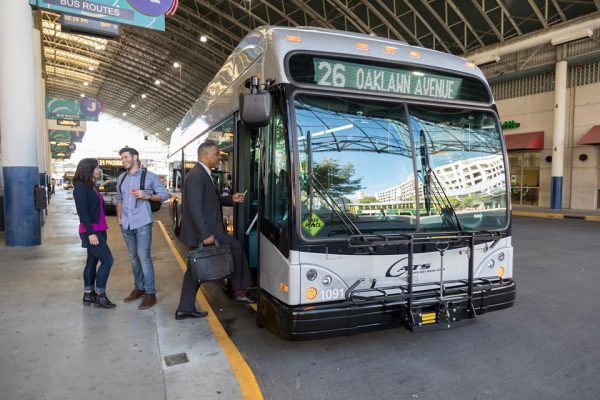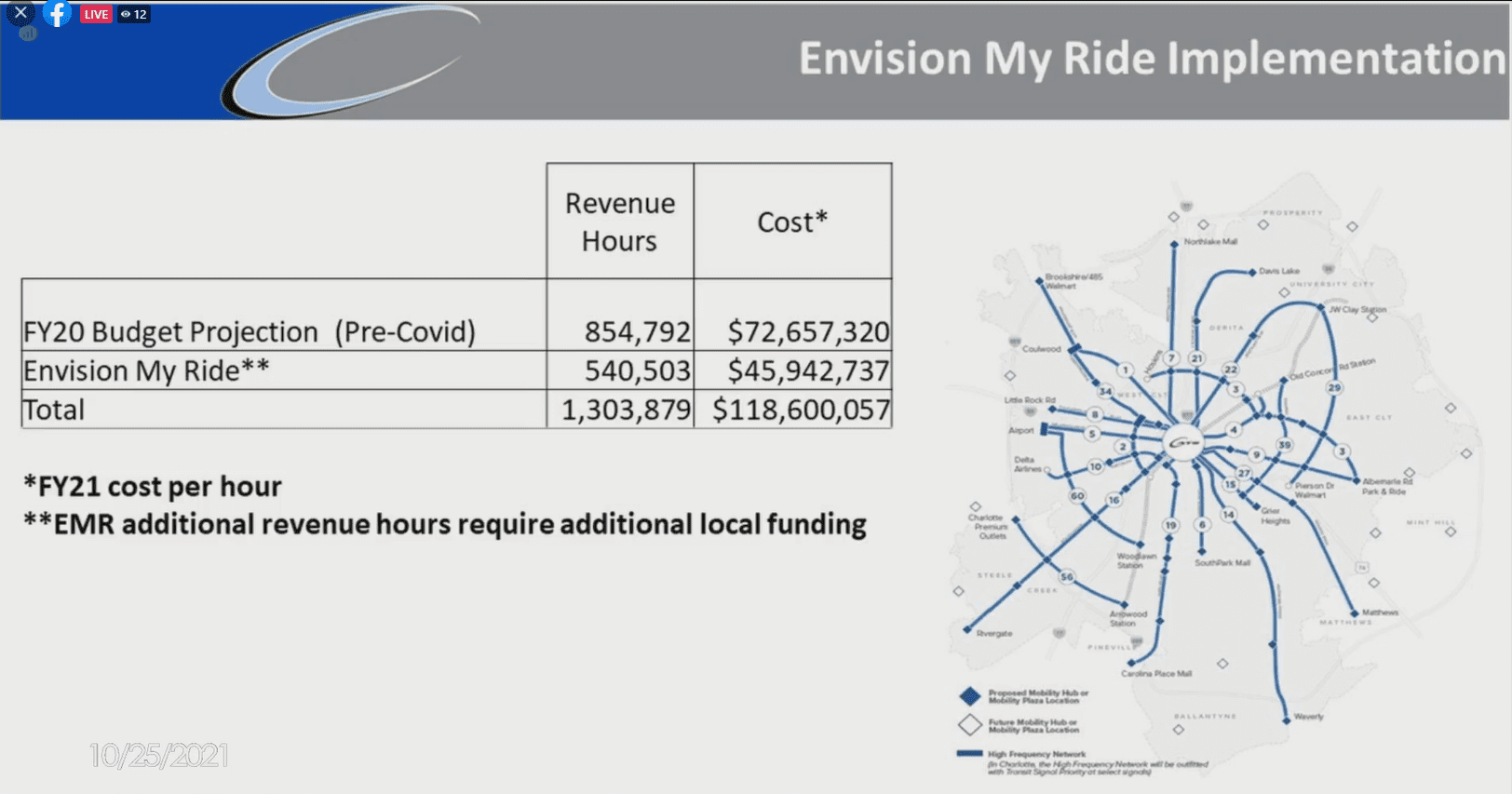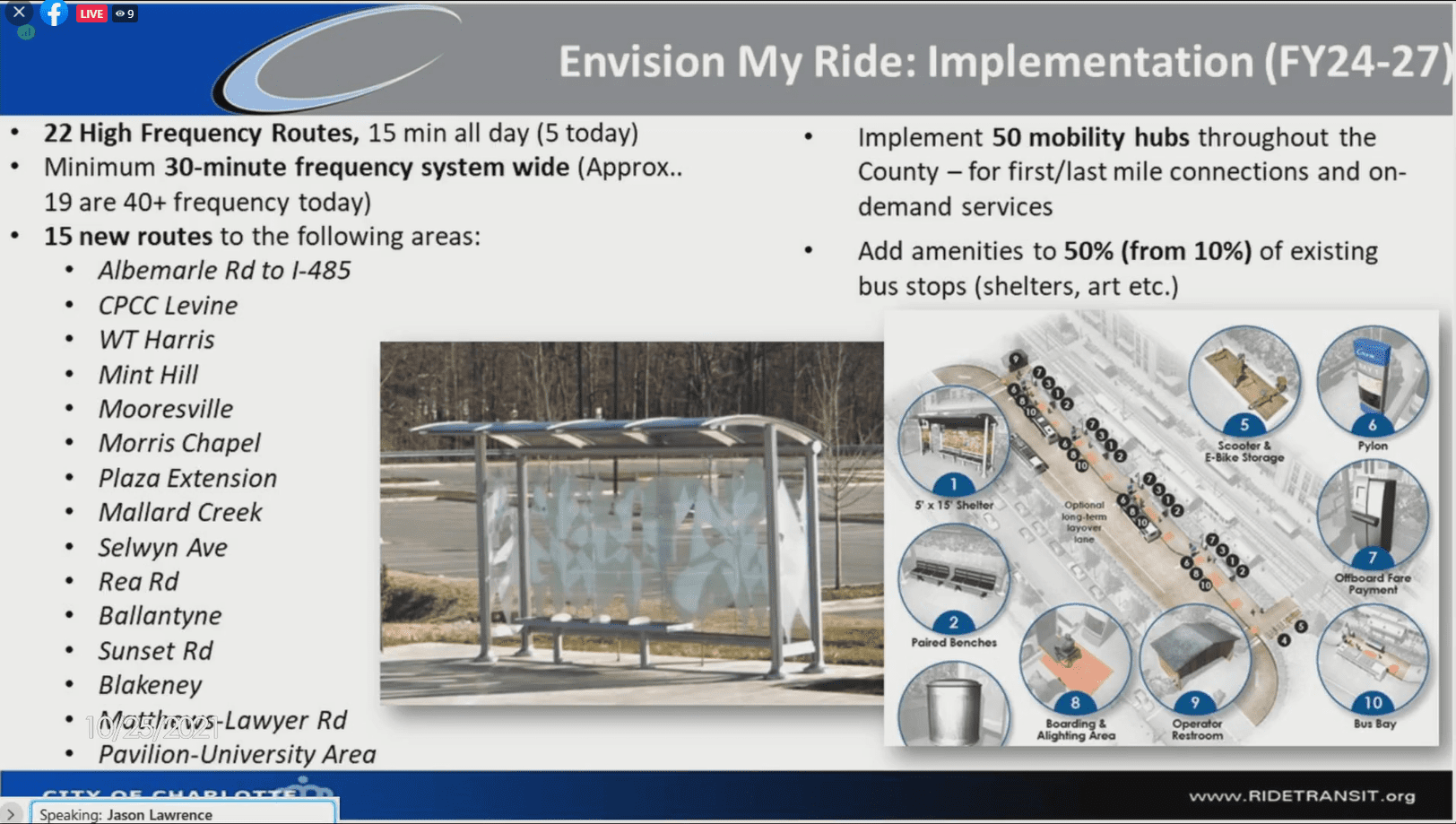The price tag for building a better bus system in Charlotte

When it comes to public transit in Charlotte, trains get the spotlight while buses carry the majority of passengers. That’s why the city plans to invest more in improving the bus system in coming years, adding frequency and experimenting with measures like bus-only lanes and traffic lights that give buses priority in order to improve speed and reliability.
On Monday, Lewis and CATS officials updated a City Council committee on the next phase of the long-running “Envision My Ride” program, designed to upgrade the bus network that’s still the backbone of Charlotte transit.
“As we were continuing to expand our rail program, it very became clear that, as we were building high-capacity rail transportation, we had ignored the necessity of building a better bus network,” said Charlotte Area Transit System CEO John Lewis. Pre-pandemic, almost 70% of CATS riders used buses.
But as the plan comes into sharper focus, estimates of the total cost continue to shift. One thing is clear: Building a better bus network in Charlotte will cost a lot – though not nearly as much as the multibillion-dollar rail projects like the east-west Silver Line that have dominated public conversations so far.
Here’s a quick update on where CATS is and where planners hope to take the bus system in the future:
The problem
Charlotte’s bus network was, for decades, based entirely on a hub-and-spoke model, bringing people from the city’s outskirts to uptown and then back out again. That meant any trip that wasn’t to or from uptown required a transfer, which led to average one-way times of about 90 minutes.
CATS started reconfiguring its routes in 2018, adding more crosstown routes to address that issue. While they’ve made progress, the hub-and-spoke system isn’t the bus system’s only challenge.

CATS’ proposed high-frequency network of buses, and the additional hours of service required to bring it to fruition. Photo via CATS’ presentation to City Council.
CATS wants a total of 22 high-frequency bus routes, with service every 15 minutes, no matter the time of day. Right now, the system has only five such routes.
Officials also want to make sure no bus routes have a frequency of less than 30 minutes. Today, 19 routes still see a bus only every minutes or less, making trips time-consuming and difficult, especially if a bus is late or a rider misses one.
“The goal would be able to roll that out over four fiscal years,” said CATS planner Jason Lawrence. Officials hope to have the full high-capacity network implemented by fiscal 2027.
CATS also wants to expand bus service with new routes in parts of the county from Mooresville to University City to Blakeney, build 50 “mobility hubs” for connections to “first-mile/last-mile” services like scooters and ride-hailing, and add amenities such as shelters and art to half of existing bus stops, up from 10% now.
The cost
Adding that much bus service – a total of more than 540,000 hours of additional revenue service each year, or a 63% expansion – won’t be cheap. CATS estimates the additional service would cost about $45.9 million in operating expenses, such as drivers and fuel.
The system would also need to add about 100 new buses and pay for the mobility hubs and bus stop amenities. That brings the total capital expenses to about $100 million.
Lawrence warned that could go up, however. The move to electrify CATS’ bus fleet could necessitate buying more buses, depending on their performance and other factors.
[Overcoming the ‘stigma’ of riding the bus]
Paying for those improvements will require additional local funding, Lawrence said.
“New, local funding will have to be identified.”
City Manager Marcus Jones says Charlotte’s bus system will be able to be transformed “day one of the sales tax increase.”
“When we think about transit it is not just the rail lines, it is the bus system also.”
Sales tax increase would have to be approved by voters
— Joe Bruno (@JoeBrunoWSOC9) October 26, 2021
If you build it, will they come?
One of the most difficult issues facing CATS right now is the obvious one: COVID-19. More than 18 months into the global pandemic, ridership numbers have barely started to recover. Overall, transit ridership year-to-date is still less than half of what it was in 2019, before the pandemic: 2.5 million rides vs. 5.8 million.
Bus ridership so far this fiscal year is actually lower than it was in 2020, at the height of the pandemic. Local bus ridership is down 1.6% year-to-date, while Blue Line ridership is up 34% compared to last year (though still drastically lower than pre-pandemic ridership).
Council member Ed Driggs asked whether CATS has any firm predictions about how many people might ride the expanded, higher-frequency bus system.

“It’s difficult to look at revenue and passenger loads” and predict what will happen post-COVID, said Lawrence. But, he said, transit systems also require more frequent and reliable service to attract riders, so you can’t necessarily look at the current state and guess at future ridership.
“In order for a service to be successful, it needs to be frequent,” said Lawrence.
“That’s the conundrum,” said Driggs. “After you build it, hopefully they will come.”
City Council’s Transportation, Planning & Environment Committee didn’t take any action on the CATS report Monday. They’ll consider funding the bus system buildout in future years as part of the broader, $13.5 billion “transformational mobility network” plan. That would require a new, one-cent sales tax, authorized by the state legislature and approved in a referendum by local voters.